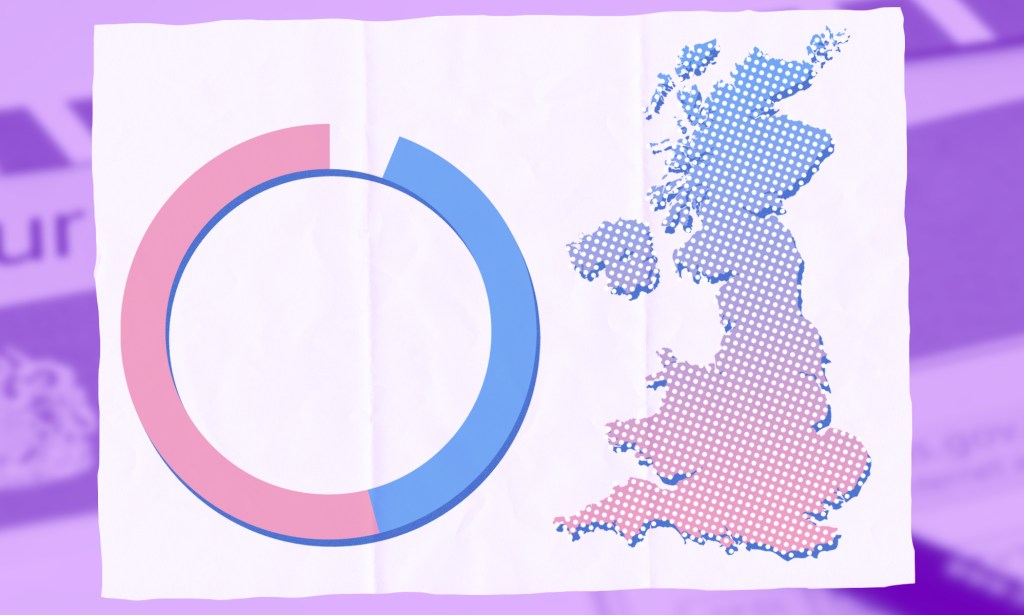Kemi Badenoch investigating census data for ‘overestimated’ trans population numbers

Kemi Badenoch. (Dan Kitwood/Getty)
The minister for women and equalities has said she is looking into whether the number of trans people in the UK, as revealed by the 2021 census, was “overestimated” due to “skewed methodology”.
Speaking in the House of Commons on Wednesday (25 October), Kemi Badenoch told MPs she shares “concerns” with the Office for Statistics Regulation (OSR) about the numbers, and has instructed officials to explore with the Office for National Statistics (ONS) “whether the census got the number right”.
During oral questions for Badenoch’s department, fellow Tory and Kettering MP Philip Hollobone asked: “In its 2021 census, the Office for National Statistics estimated that there were 260,000 transgender people in the UK. Does the minister agree with the separate Office for Statistics Regulation that due to skewed methodology this number is likely to have been a huge overestimate?”
Before Badenoch answered, there were loud cheers from some fellow MPs.
The minister replied by expressing her concerns about the figures and noted she had ordered an investigation into whether there had been a “lack of understanding of the question” in the census.
“We need to be very careful about the language, people don’t often understand what we mean when we use terms like ‘transgender’, ‘gender identity’, we’ve got to make sure they understand that,” she said, adding that the ONS would publish the results of its review by the end of the year.

In January, the ONS released the first-of-its-kind census data on sexual orientation and gender identity in England and Wales, figures which gave the best estimate to date of the size of the countries’ LGBTQ+ community.
The numbers showed around 1.5 million people (3.2 per cent) identified as gay, lesbian, bisexual or as another sexual orientation, while 262,000 (0.5 per cent) reported that their gender identity was not the same as the sex they were assigned at birth.
Within the gender-identity figures, there were an equal number of transgender men and women (about 48,000 each), while 30,000 people said they were non-binary and 18,000 reported they identified with a different gender identity.
Answering the question regarding gender identity, was voluntary, leading advocacy groups to wonder if the figures were actually an underreporting, because those who are not out might fear filling in their gender identity on an official document.
“We… cannot ignore the probability that some trans people were among those who chose not to respond to the voluntary question,” deputy national statistician Emma Rourke wrote in an October blog post for the ONS.

On 9 October, the OSR published its own interim review of statistics on gender identity, looking at the 2021 census.
The review’s authors admitted that “measuring gender identity is undoubtedly challenging” and due to the small size of the trans population “creates challenges for data collection”.
The review reads: “Following the first release, concerns were raised with [the] ONS and the Office for Statistics Regulation about the published estimates of the transgender population.
“As additional breakdowns were published, these concerns extended to the relationship between gender identity and proficiency in English (or Welsh). Users also raised concerns about the level of methodological information published.”
The review also noted that in April the ONS sought to address these concerns through its own research. The OSR subsequently announced plans to review that research.
However, in August the ONS cancelled the publications and released a statement, in which it said that the research is ongoing and further updates will be published in the future.
Due to this delay, the OSR subsequently published its interim review in place of a full review.
In response, the ONS said it would set out a plan – published within the next four weeks – detailing what the body is exploring, what such research might show and when the results will be published.
How did this story make you feel?

